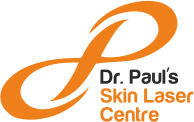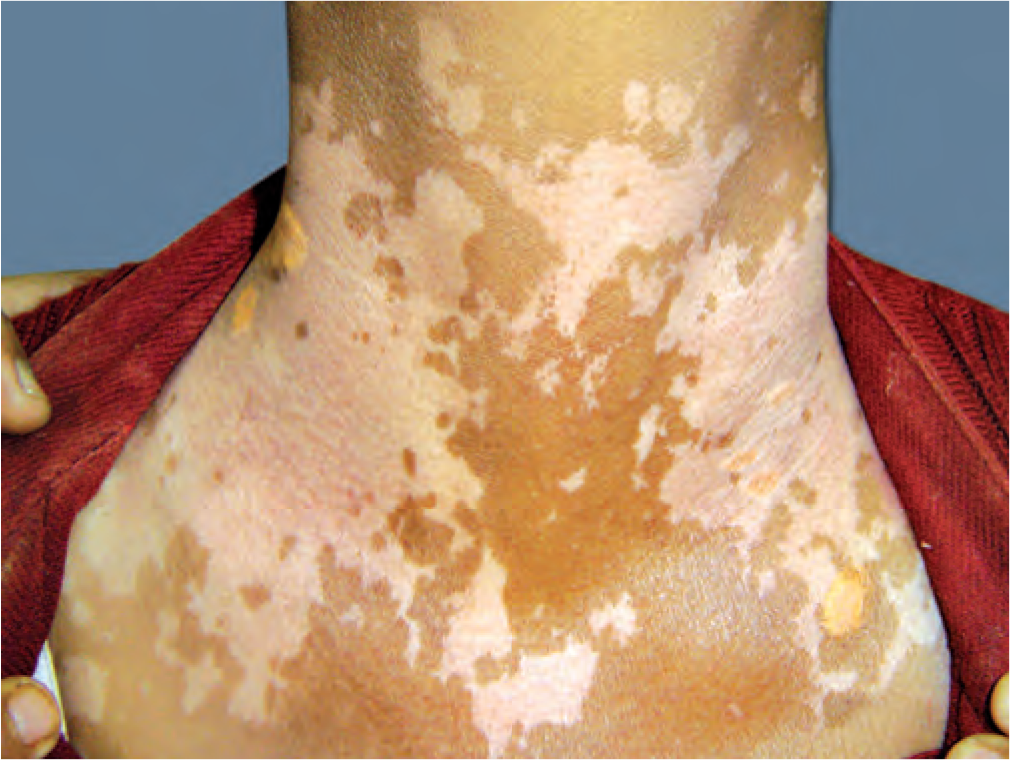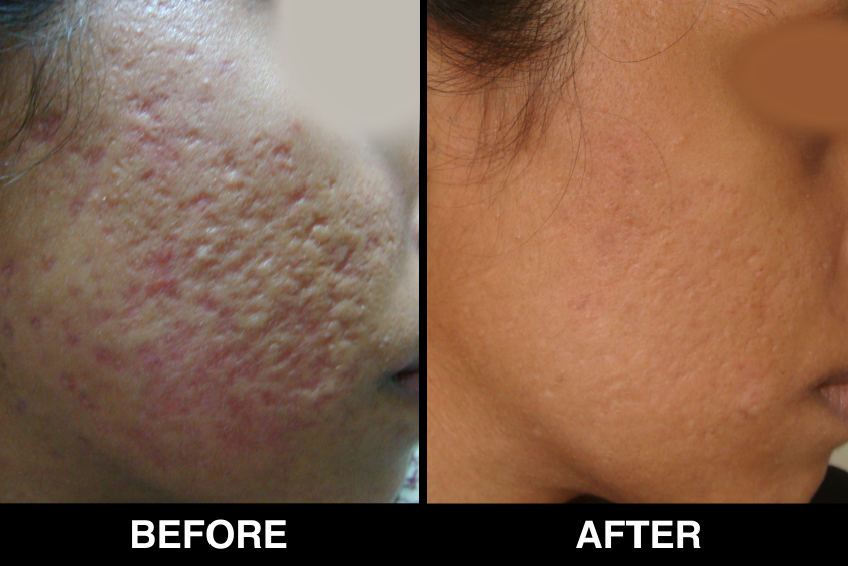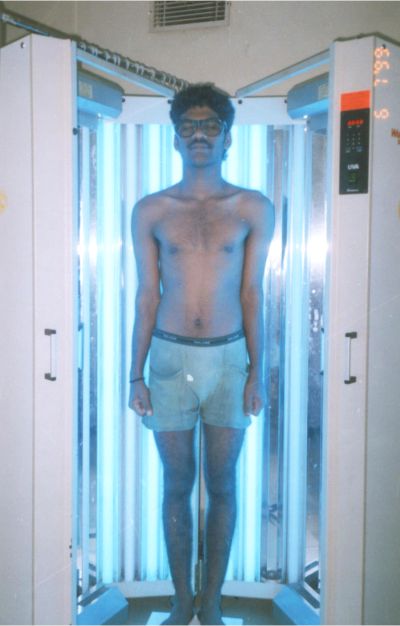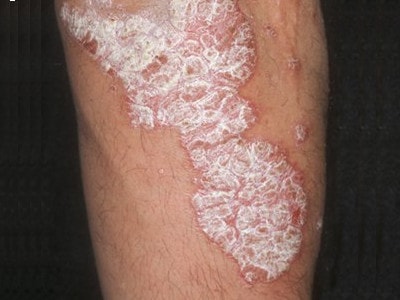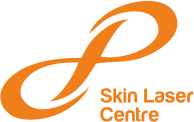De-Pigmentation
Not to treat
- Patients with more than 50% area involved
- Unstable extensive disease with multiple coexisting morbidties eg. old age, obesity, Hypertension, diabetes, CAD etc.
- Acral vitiligo with extensive spreading disease
- Long standing Acral vitiligo having frequent relapses
- Patients with unrealistic expectations or hopes
Ideal Depigmenting Agent
- Should have a potent, rapid, and selective effect on Melanocytes
- Should lead to permanent removal of pigment
- Nontoxic with minimal side effects
Options
- Monobenzyl ether of Hydroquinone (MBEH)
- Monomethyl Ether of Hydroquinone/4-0 Methoxyphenol
- Topical Diphencyprone (DPCP)
- Imiquimod
- Phenol
- Cryotherapy
- Lasers
Counselling in Depigmentation
- Cultural effects Depigmentation, especially in dark skin.
- Treatment time, course
- Depigmentation at distant body sites,
- Probable permanency of depigmentation,
- Side effects : contact dermatitis, and the possibility of repigmentation.
- Patient must be provided time and assistance in making the decision and family members should be involved in the process too.
- Avoid below 12 yrs of age
Monobenzyl ether of hydroquinone (MBEH) Monobenzone or p-(benzyloxy) phenol
- First, an open use test should be performed on pigmented skin of the forearm. If no contact dermatitis develops, the cream can be applied to the face or areas chosen by the patient as top priority.
- Start treating sequentially moving from highest to lowest priority.
- Gradually, lightening of skin occurs over a period of 4 to 12 months. Depigmentation induced by MBEH is usually irreversible and histologically associated with loss of melanosomes and melanocytes
Role of Lasers in Depigmentation
- Failure to MBEH/other bleaching agents
- Areas like face where rapid Depigmentation is required within days.
- Lasers overcome the disadvantages of topical therapies, e.g., local redness, burning, itching, long duration.
- With lasers, large areas can be Depigmented in one sitting, as opposed to Depigmentation performed using a bleaching agent.
Lasers Available
- Q-switched ruby (QSR) laser (694 nm)
- Q-switched alexandrite laser (755 nm)
- Q switched Nd YAG laser ( 532nm)
Treatment Procedure
- This laser emits pulses with a wavelength of 532 nm with a pulse duration between 6 nanoseconds in a frequency of 1 to 10 Hz
- Spot size 5-8mm , fluence 1-2 J/cm 2.
- A maximum size of 80 – 100 cm 2 can be treated in each session
- Anesthesia :: eutectic mixture of lidocaine (EMLA), 25 mg/g and prilocaine 25 mg/g.
- Avoid exposure to sunlight for 6 weeks.
- Multiple treatments are performed at an interval of 4-6 weeks to bring about complete depigmentation of extensive areas
Side Effects
- Procedure is painful.
- The QSW Nd YAG laser therapy may fail in permanently removing pigmented patches and after several months of treatment, follicular repigmentation may develop due to migration of perifollicular melanocytes to the epidermis,.
- The depigmenting effect of the QSR laser therapy can be considered as a Koebner phenomenon. Patients with active Vitiligo respond better to laser therapy than those with stable disease.
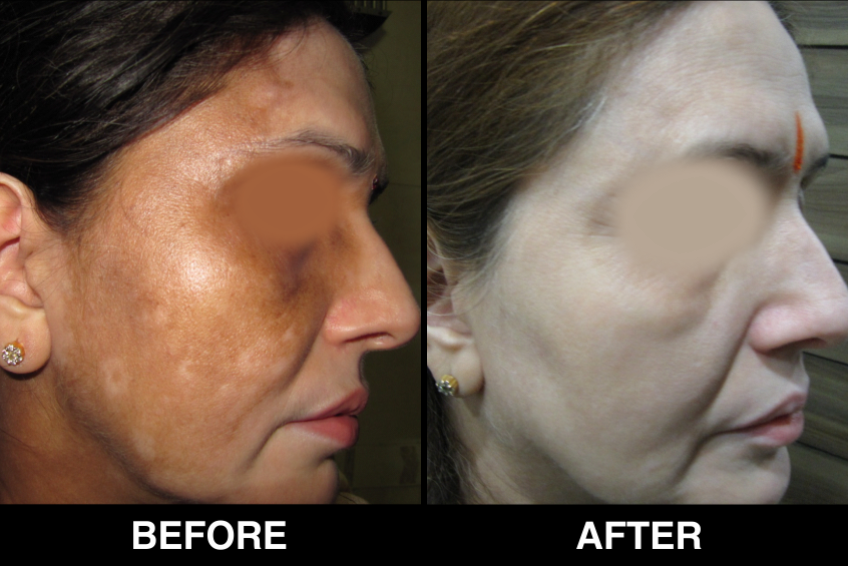
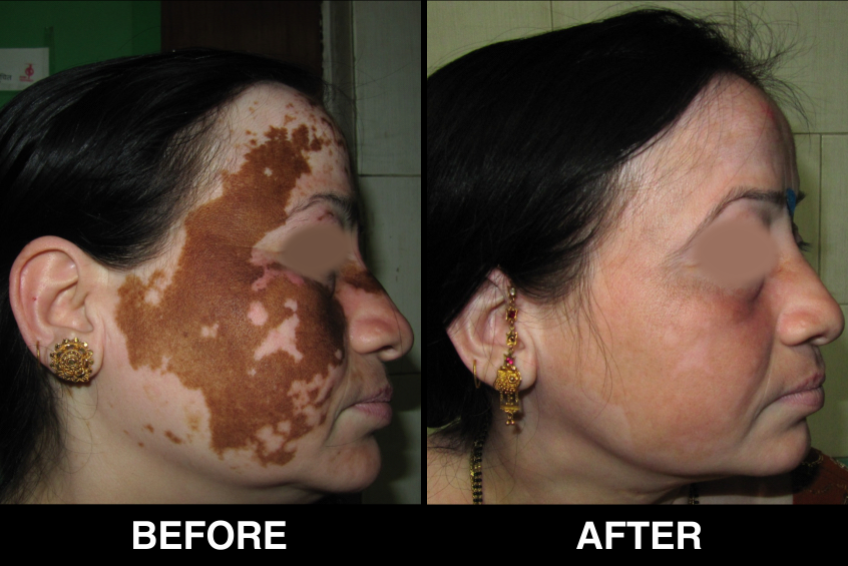
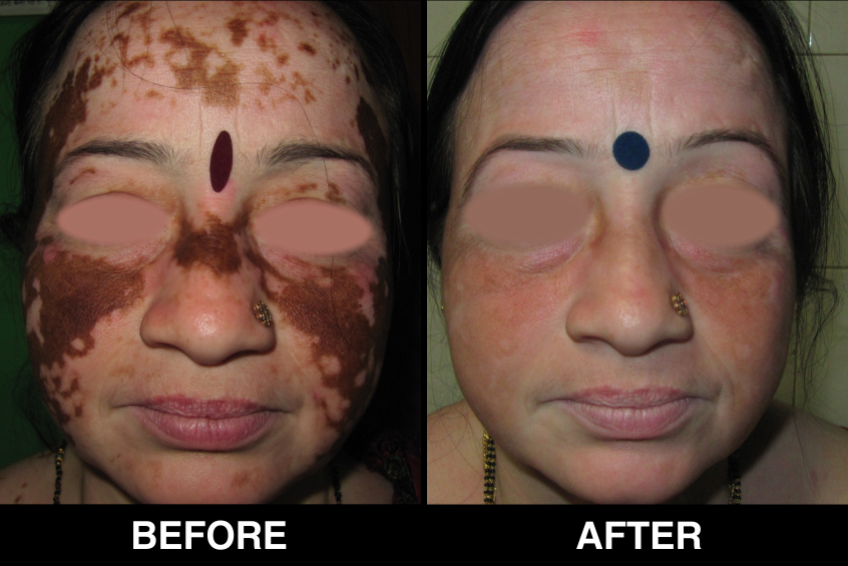
Appointment Form
Book An Appointment






1996-1-1
1997-2-1
1997-3-1
1997-4-1
1997-5-1
1998-6
Facebook
